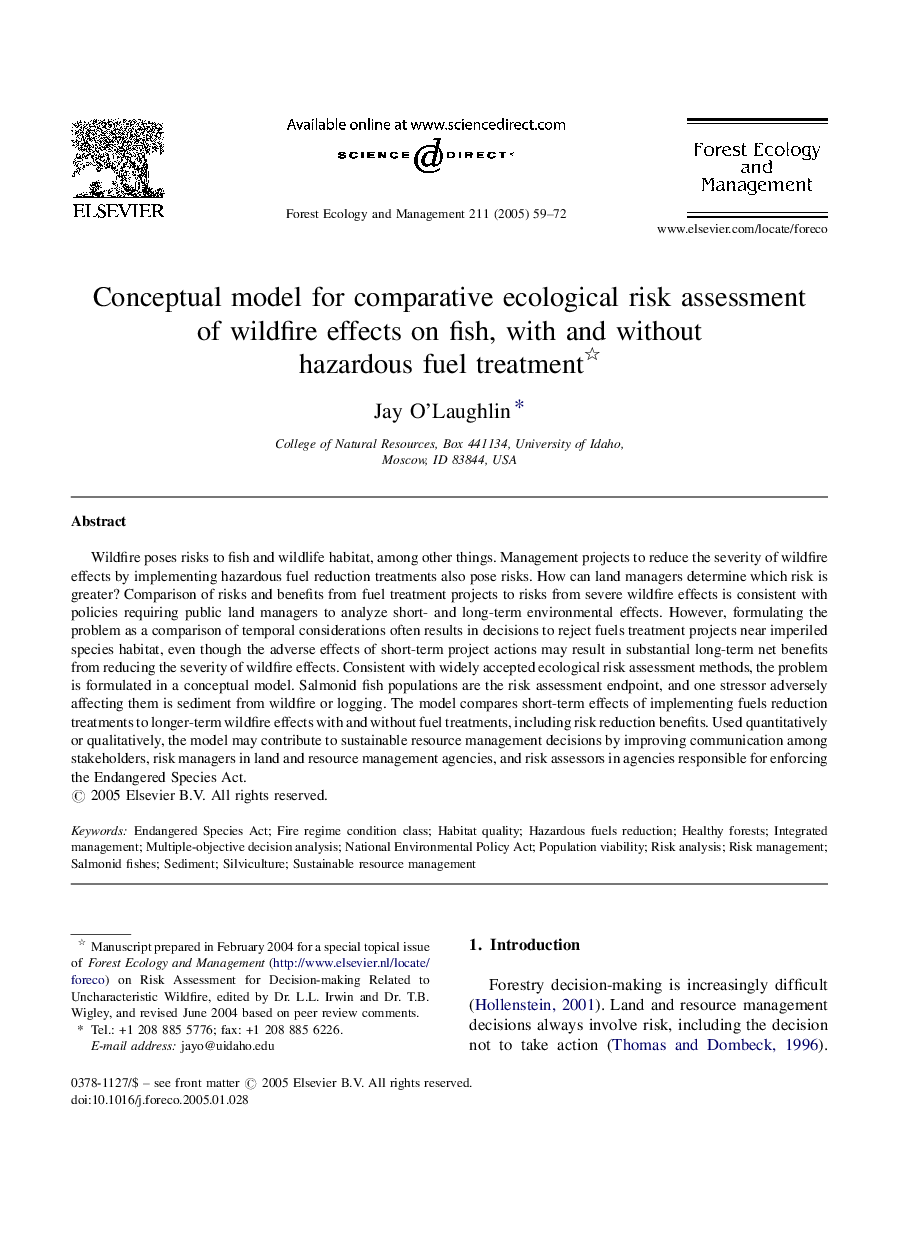| Article ID | Journal | Published Year | Pages | File Type |
|---|---|---|---|---|
| 9620337 | Forest Ecology and Management | 2005 | 14 Pages |
Abstract
Wildfire poses risks to fish and wildlife habitat, among other things. Management projects to reduce the severity of wildfire effects by implementing hazardous fuel reduction treatments also pose risks. How can land managers determine which risk is greater? Comparison of risks and benefits from fuel treatment projects to risks from severe wildfire effects is consistent with policies requiring public land managers to analyze short- and long-term environmental effects. However, formulating the problem as a comparison of temporal considerations often results in decisions to reject fuels treatment projects near imperiled species habitat, even though the adverse effects of short-term project actions may result in substantial long-term net benefits from reducing the severity of wildfire effects. Consistent with widely accepted ecological risk assessment methods, the problem is formulated in a conceptual model. Salmonid fish populations are the risk assessment endpoint, and one stressor adversely affecting them is sediment from wildfire or logging. The model compares short-term effects of implementing fuels reduction treatments to longer-term wildfire effects with and without fuel treatments, including risk reduction benefits. Used quantitatively or qualitatively, the model may contribute to sustainable resource management decisions by improving communication among stakeholders, risk managers in land and resource management agencies, and risk assessors in agencies responsible for enforcing the Endangered Species Act.
Keywords
Related Topics
Life Sciences
Agricultural and Biological Sciences
Ecology, Evolution, Behavior and Systematics
Authors
Jay O'Laughlin,
